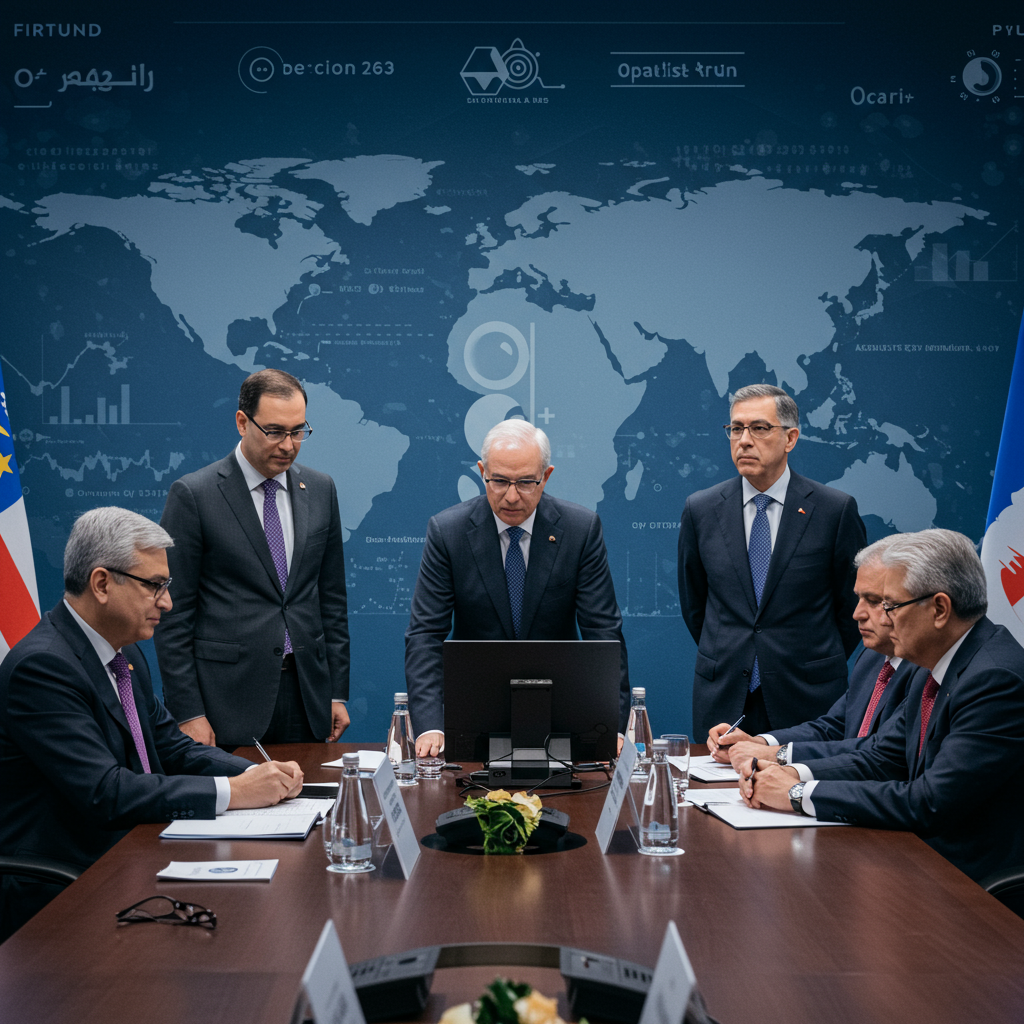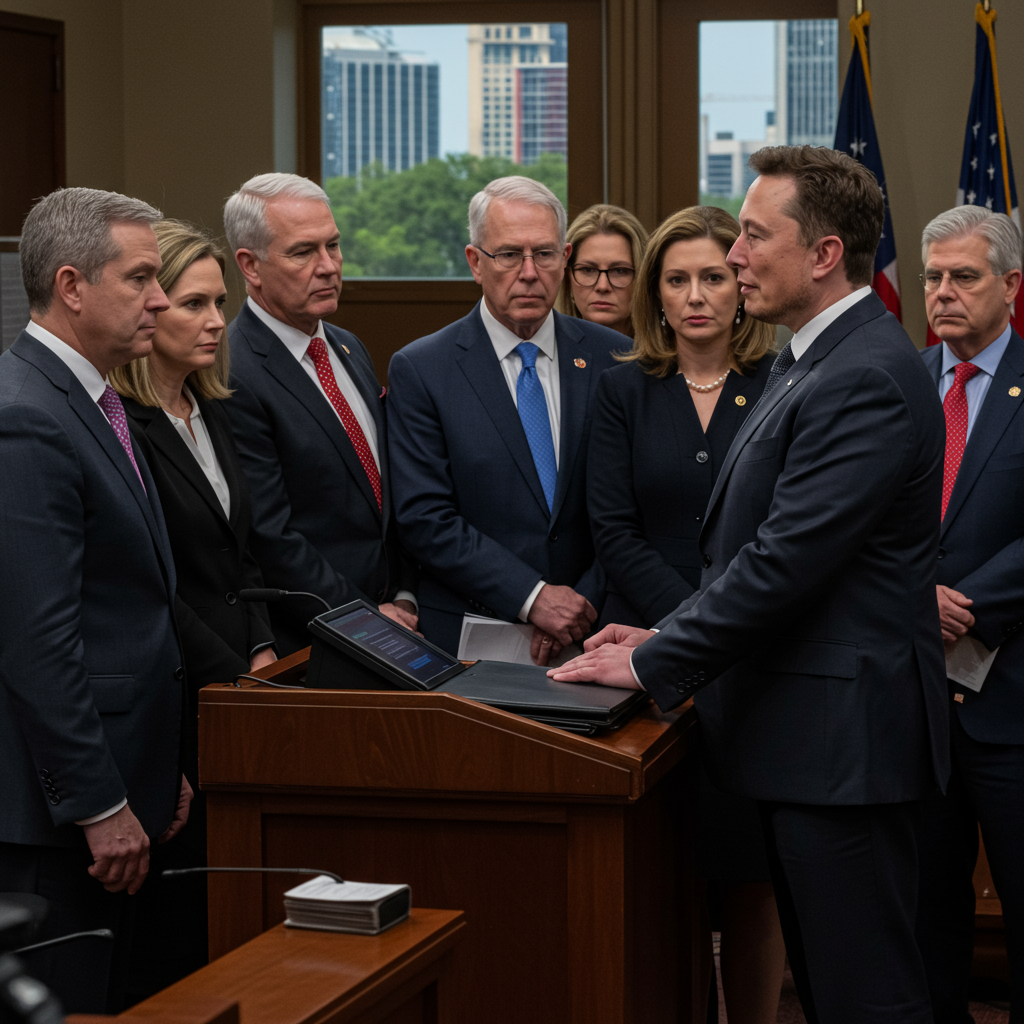The world’s leading oil producers, under the OPEC+ alliance, have finalized plans for a significant increase in crude oil output starting in August. This move, confirming earlier expectations but exceeding some analyst projections, signals the group’s response to a perceived “steady global economic outlook” and robust market fundamentals. The decision could introduce more supply into the market than anticipated, potentially influencing global oil price trends in the latter half of the year.
OPEC+’s Accelerated August Output Boost
Eight key members of the Organization of the Petroleum Exporting Countries (OPEC) and its non-OPEC allies, a coalition known as OPEC+, have committed to collectively boosting their oil production by an additional 548,000 barrels per day (b/d) next month. This confirmed increase, announced recently, represents a notable acceleration compared to the 411,000 b/d increments the group had implemented in preceding months.
The 548,000 b/d hike is roughly equivalent to half a percent of current global oil production levels. While analysts had widely expected an increase, the final agreed-upon figure was higher than the 411,000 b/d rate that several market observers and sources within the group had indicated as likely beforehand. This larger-than-expected boost highlights the group’s current assessment of market conditions.
Key nations participating in the decision include heavyweights like Saudi Arabia, Russia, the United Arab Emirates, and Iraq. Their coordinated action is a direct result of deliberations aimed at adjusting supply targets in line with the alliance’s strategy for market management.
Driving Forces Behind the Increase
OPEC+ leadership explicitly stated the decision was driven by a positive assessment of the global economy and the current state of the oil market. They cited a “steady global economic outlook” alongside “healthy market fundamentals” as primary justifications for ramping up production volumes.
However, the strategic motivations extend beyond just immediate demand signals. Sources familiar with the alliance’s internal discussions indicate that the accelerated pace of supply increases is also part of a broader effort by OPEC+ to regain and protect market share. The group, which accounts for roughly half of the world’s oil output, faces ongoing competition from rising production outside the alliance, particularly from countries like the United States.
This August increase is also a continuation of OPEC+’s program to unwind significant output cuts previously implemented. Starting earlier in the year, the group began rolling back a substantial 2.2 million b/d voluntary cut that had been in place. The decision was made to accelerate the pace of these unwinds in recent months, a trend the August hike firmly continues.
Navigating Member Compliance
The process of increasing output targets is complex and involves navigating compliance among diverse member states. While the collective target is raised, actual production can sometimes lag behind.
This discrepancy can occur for various reasons, including operational issues, political factors, or, in some cases, members needing to compensate for past instances where they produced above their allocated quotas. Sources have noted that addressing compliance issues, where some members overproduced (like Kazakhstan), has also played a role in the strategic adjustments and accelerations seen recently. The accelerated unwinding helps accommodate differing production capabilities and past behaviors within the group.
Potential Impact on Global Oil Prices
Introducing an additional 548,000 b/d into the market is a significant supply-side event. Given that this increase exceeded some market expectations, it inherently carries the potential to weigh on crude oil prices.
More supply entering the market, especially if demand does not keep pace, typically puts downward pressure on prices. Analysts are closely watching how quickly this pledged increase translates into actual barrels reaching the market and how global consumption evolves. Some experts suggest that OPEC+’s continued production increases could contribute to a market environment where supply potentially outstrips demand during the second half of the year. Such an imbalance could lead to lower price levels compared to periods of tighter supply.
Historical Context of OPEC+ Actions
Understanding the current decision requires looking at OPEC+’s history of market intervention. The alliance has a proven track record of coordinating supply adjustments to influence global oil balances and prices.
For instance, back in April 2020, in response to the drastic collapse in demand and subsequent inventory build-up caused by the initial phase of the coronavirus pandemic, OPEC+ implemented a massive output reduction agreement. That agreement, initially set at a staggering 9.7 million b/d cut starting in May 2020, was the largest coordinated cut in history.
This historical action demonstrates the group’s capacity to significantly remove supply from the market when conditions warrant. That period of deep cuts, coupled with production declines elsewhere, successfully shifted the market from oversupply to undersupply for the first time since mid-2019, leading to significant global inventory draws.
This past episode of aggressive cuts contrasts sharply with the current phase of increasing output, highlighting the dynamic nature of OPEC+’s strategy which adapts based on perceived market needs, inventory levels, economic forecasts, and strategic objectives like market share. Iran, Libya, and Venezuela were notably exempted from the 2020 cuts due to sanctions or internal instability, illustrating the political complexities inherent in the alliance.
Looking Ahead
The August production hike marks another step in OPEC+’s journey to carefully manage supply as the global economy navigates various challenges and opportunities. The group’s future decisions will depend heavily on evolving demand forecasts, inventory levels, geopolitical developments, and the production performance of both member and non-member countries.
Market participants will be scrutinizing actual production data in August to see if the targeted 548,000 b/d increase is fully realized. The pace and scale of future production adjustments by OPEC+ will remain a critical factor for oil price volatility and the global energy market balance.
Frequently Asked Questions
What specific amount of oil production did OPEC+ agree to add in August 2025?
Eight key members of the OPEC+ alliance agreed to increase their collective crude oil production by an additional 548,000 barrels per day (b/d) starting in August 2025. This figure was higher than the 411,000 b/d increase some analysts had anticipated.
Which key member countries typically participate in OPEC+ decisions on oil output levels?
The core group of countries making these decisions generally includes major producers like Saudi Arabia, Russia, the United Arab Emirates, Iraq, Kuwait, Oman, Kazakhstan, and Algeria, although the exact participating members for a specific agreement can vary slightly.
How could OPEC+’s decision to increase oil output potentially impact global crude oil prices?
An increase in oil supply, particularly one that exceeds some market expectations, typically places downward pressure on global crude oil prices. Analysts suggest that this continued pattern of supply increases by OPEC+ could contribute to a market where supply exceeds demand in the second half of the year, potentially leading to lower prices.
Word Count Check: 831




